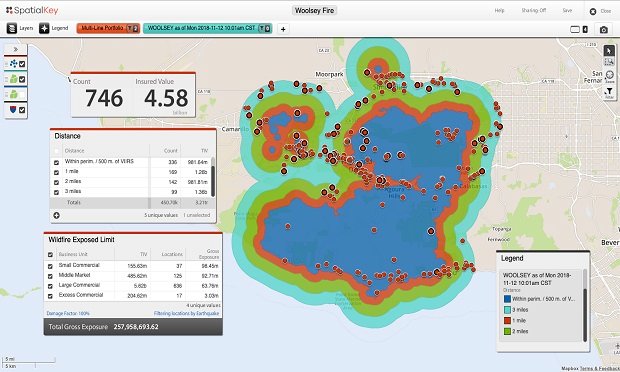Across all sectors of financial services, data standards are inprogress, but will insurance see a checkered flag at the finishline?
|By
|Fifteen years ago, while insurers were pondering whether to usetheir own paper applications or convert to ACORD forms, bankingcustomers could approach an ATM and perform electronic transactionswith virtually any bank. In recent years, the investment industrytransformed itself by using standards to create fluidcompany-brokerage connections while the insurance industry wasdebating the merits of SEMCI. Youre probably tired of being toldthe insurance industry lags behind other financial sectors when itcomes to developing and using industry data standards.
|Well, take heart: The insurance industry has gained ground inthe standards game and in some areas, notably XML, has pulled even.Also, while other sectors have had significant successes, theystill face challenges, and insurers can learn from both.
|The Successes
|The biggest lesson to learn is every successful standardsinitiative has delivered value to all parties involved in theeffort. If you do not have a compelling business case for everybodymoving [to industry standards] from what already is being used, nomatter how cute the standards are, theyre not going to gaintraction, says Mary Knox, research director in financial servicesat Gartner.
|In banking, one of the greatest win-wins has been in paymentprocessing. Daniel Schutzer, vice president of strategic technologyat Citigroup, illustrates the impact with examples of check orcredit-card payments. From the consumers point of view, they canpresent any credit card or check, and from the merchants point ofview, payments get done even though they dont have the same bankingrelationship [as their customers]. Its an example of how standardshave both responded to a demand and created an industry.
|That industry today con-sists of various industry-ownedcooperative networks for interbank payments, including credit-cardnetworks, the Electronic Payment Network (EPN), and the Society forthe Worldwide Interbank Financial Telecommunication (SWIFT), theworlds largest financial network. SWIFTs core bank-to-bankmessaging service is called FIN, and the protocol used tocommunicate on FIN has come to dominate the messaging used by banksand investment firms for payments even outside the FIN network.[Today,] it would be unthinkable to process a payment without usingSWIFT, says Pierre Pureur, director in the financial servicestechnology group at BearingPoint.
|And what was the win for banks? Although the SWIFT [protocol]standardized data [in the payment process], the SWIFT network was asuccess not because of that standardization but because itdelivered secure payments to the financial market, Pureur says.
|In investments, the biggest win-win of standards has beenimproving communication and speeding the trade process between thebuy side of the business (investment management firms) and the sellside (brokers). Dominant in that effort has been the FIX (FinancialInformation eXchange) Protocol.
|FIX defines not only message fields and values but also atransport layer and therefore how to make a connection to a sellside [broker]. This makes it easy to add and switch brokers,because all parties to the transaction know how [the FIX message]is going to behave, says Scott Atwell, manager of FIX trading andconnectivity at American Century Investments. Atwell also isco-chair of the Global Steering Committee and Global TechnologyCommittee of FIX Protocol Limited (FPL), the industry associationfor FIX standards development.
|American Century has been in-volved with FIX since the standardsfirst development in 1995 and has been adopting FIX since 1996.However, it has been in recent years that American Century hasrealized the greatest impact of those standards. Today, it requiresstandards compliance from all broker partners and effectivelyhandles 100 percent of external tradesabout $100 billionannuallyelectronically via FIX.
|In the early days of implementation, we measured the impact [ofFIX] by our ability to handle increased trading volume withoutadding traders and being able to add and switch from one broker toanother easily, Atwell says. But now we realize the number-onebenefit isnt efficiency, its risk reduction.
|That is, by enabling straight-through processing from sale tosettlement, FIX helps American Century ensure customer orders areprocessed accurately.
|Similar but Different
|Unlike payments and trades of listed securities, other financialtransactions have a process complexity that traditionally hasimpeded efforts to develop and adopt industrywide data standards.In insurance, for example, except for highly commoditized lines ofcoverage, contracts may be unique and underwriting complex,requiring consumption of data from third parties with which no EDIrelationships have been established. Part of the problem also isinsurance has been regulated by the states, says Carol Chapman,financial reporting compliance specialist for American NationalInsurance. States just now are getting together and coming toagreements on common [data] formats.
|The mortgage banking industry likewise contends with lengthy,complex processes and connections with multiple third parties tocomplete a single transaction. And in some ways, its EDI challengeis even greater than insurers 50-state problem. Adam Hall, vicepresident of process technology at IndyMac Bank in Pasadena,Calif., explains of the more than 3,000 counties in the nation,just 60 currently accept electronic mortgage document filing usingstandards. It will be a while before automation [of that process]occurs, he says.
|Insurance, however, does have its strong points. In otherindustries, there have been failures of vendor-backed technologystandards, says Matthew Josefowicz, manager of the insurance groupat Celent. The nice thing about ACORD [standards] is they areindustry backed and industry designed as opposed to beingpromulgated by one or two vendors.
|Also, ACORD is different from organizations in other financialservices in that it covers the breadth of products the insuranceindustry offers, albeit by different standard sets. In contrast,other sectors tend to have multiple organizationssuch as IFX(Interactive Financial eXchange) within B2B banking, OFX (OpenFinancial eXchange) in consumer banking, and MISMO (MortgageIndustry Standards Mainten-ance Organization) in mortgagebanking.
|However, according to Schut- zer, having several organizationshasnt hindered efficiency in the banking industry. These variousorganizations are each focused on different payments products andbusinesses with little interaction, such as business to business ormerchant to consumer, says Schutzer, who has served on advisoryboards for both IFX and OFX.
|He also notes banking doesnt have the third-party interactionthat insurance does. You come to Citibank, you open an account, andits done by Citibank employees. In insurance you have a network[including third parties such as] agents and reinsurers. Its moreimportant [in insurance] to rely on standards to keep thoseentities working together.
|For its part, ACORD is striving to combine its multiplestandards, beginning with the creation of a common data dictionaryfor all insurance. It does not, however, set a time frame for theultimate creation of a single XML standard, maintaining thatexisting investments by carriers prevent the organization fromgetting there directly and immediately. As additional transactionsand processes are identified that impact all lines of business, wewill seek opportunities to create uniformity across multiplestandards, says Ron Dudley, vice president of standards atACORD.
|Shifting Focus of Standards
|The initial interest of carriers in ACORDs XML standards was,similar to the world of investments, company-broker communication.However, the recent trend has been to apply ACORD XML standardswithin the enterprise.
|If you go back two years ago, people werent sure what thebenefits of standards would be, Josefowicz says. What has changedthis year is people are understanding data standards are a realpotential boon to the industry. As Web services andservice-oriented architecture have taken hold in insurance, peopleare embracing the XML standards as a common language betweenvarious systems that dont integrate well or that have differentdata models.
|In addition, in the past two years, vendors have been increasingtheir support of ACORD standards as an integration mechanism.Anything that would reduce the cost
of adding a component to
the infrastructure is valuable, Josefowicz notes.
American National is an example of a carrier using XMLinternally to connect its various legacy systems and achieve bothprocessing efficiency and development cost reduction. We weredealing with instances where literally hundreds of differenthard-coded interfaces were required to move one piece ofinformation through the system in its annuities business, explainsChapman.
|XML has proven to be the technological Rosetta stone forAmerican Nationals different data languages and has enabled theinsurer to develop a unified front end used by both internal andexternal constituencies, regardless of the number of legacyapplications involved in a particular transaction. The systems thatstore data are not 2005 systems; they are mainframes, Chapman says.To develop a presentation layer that gives speed and response[without using an XML layer] would have taken hundreds of timesmore money and development time than it did.
|In insurance, carriers also are looking to ACORD as the basisfor internal data modeling. Were seeing a lot of interest inenterprise data models this year, Josefowicz points out. Andinternal adoption of industry standards is a trend taking place inother financial services sectors, as well. American Century, forinstance, is using FIXMLan XML version of the FIX Protocolin thegradual rearchitecting of its order management systems and in thedevelopment of new systems.
|As we are redeveloping parts of the order management system,componentizing pieces, and rewriting them, we need to integrate onepart to another and to represent data. It doesnt make sense tocreate our own format when FIXML is available, Atwell states.
|The XML Question
|XML-based industry standards still have a relatively low rate ofadoption in the investment sector, according to Gartner. The globalSWIFT network primarily uses its non-XML syntax, as well. Contrastthat with insurance, where standards efforts are predominantly XMLbased.
|Part of the reason is the earlier adoption and success ofnon-XML standards in other financial services sectors make itdifficult to establish a business case for change. There isnt abusiness driver to move [existing FIX transactions to FIXML], andtheres risk and cost in making a move, Atwell says. Its a toughsell.
Atwell also claims XML may not be well suited to some areas offinancial services, particularly where the purported overhead ofXMLbased on its self-describing natureis an impediment tohigh-volume transactions. He reports initial efforts by FPL torepresent FIX data in XML resulted in messages that were more thansix times larger. That presented real challenges, he says, andresulted in FPL transport optimizing XML in its FIXML protocol toreduce the overall message size and address transaction volumeconcerns.
Gartners Knox, however, asserts the main issue behind the lackof XML adoption in other financial servicesand investments, inparticularis simply those industries havent been working with XMLas long as insurance has been. If you talk about a very high volumeof exceedingly time-sensitive transactions, [overhead of XML] maybe an issue. [But] most of the issue around lack of XML adoptionhas to do with the maturity of the standards themselves at thesemantic layer.
|We havent had any issues [with XML], says Hall. And honestly, ifyou spend some time listening to a few developers discussing how tomake a change in an interaction with EDI standards, needing tospend a half hour just discussing definitions, the benefits ofhuman readable XML standards are evident.
|For their part, most standards bodies are working on XMLstandards either on a going-forward basis or in a dual-use scenarioalongside legacy syntaxes. Additionally, the industries are makingthe movecarefully and slowlytoward convergence of standards. Forinstance, FPLin addition to its ongoing work on FIXMLis workingwith the International Swaps and Derivatives Association (ISDA) onFpML, an XML-based language widely used in trading over-the-counterand complex derivative instruments.
|Additionally, external influences, such as governmentregulation, will drive XML adop-tion. Consider XBRL (eXtensibleBusiness Reporting Language), a dialect of XML whose firstspecification was published in 2000. There is a lot of regulatoryinterest in [XBRL] now, Knox says.
|The banking industry, for example, is in the process of updatingits call reporting, which will replace the submission of variouscall reports to several federal agencies with one XBRL-based reportto the Federal Financial Institutions Exami-nation Councilclearinghouse, with the goal of reducing the time of call reportingfrom two months to two days. Elsewhere in financial services, boththe SEC and NAIC are working toward the ultimate receipt ofXBRL-based reports. And ACORD has committed to working with XBRL tohelp insurers bridge from transactional to reporting data.
|XBRL transforms financial information from text into intelligentdata by applying tags based on standard accounting practices.[Regulators] are interested not only in receiving financial reportselectronically but in having the ability to click on a particularnumber and having that number exploded with an explanation of howit was derived as well as the ability to roll up numbers easily[into new analyses], Chapman says.
|Maturing standards, continued adoption, and regulatoryrequirements will make XBRL increasingly important not just toinsurers own financial filings or as a tool to comply withfinancial transparency regulations such as Sarbanes-Oxley but alsoin their ability to consume information more easily as underwritersand to manage their own assets.
|XBRL allows you, in a much more automated fashion, to pulltogether and digest information that is typically manuallyextracted and entered into spreadsheets, says Knox. One of the bigpromises [for XBRL standards], and one thats still far away frombeing realized, is internal reporting and consolidation ofperformance in-formation within the [insurance] enterprise.
|But as the history of other efforts has shown, what will mostinfluence the development and adoption of any XML standard is itscapability to deliver value. Knox asserts scenarios that present agreen-field situation for systems development will provide naturalopportunities to do this. You have new instruments being introducedin the marketplace with new requirements for information, so as aresult, new [XML] standards are being created, she says.
|Future Focus
|The progress of data standards adoption in insurance willcontinue to move faster in internal systems and integration vs.external interfaces with agencies, reinsurers, or other thirdparties, Josefowicz predicts. Thats not to say there arentsuccessful [external] projects, but [external adoption] suffersbecause insurers arent looking at opening up their businesspractices; theyre just looking to do business easier and cheaper,he says.
|In the ultimate comparison of insurance to other financialservices, its worth remembering even in sectors where datastandards are adopted universally today, it wasnt always the case.In the early days of the ATM, nobody was collaborating, Schutzersays. We were hoping if we put more machines on more streetcorners, we would get more business [than other banks].
|It took years to move to an industrywide ATM standard and forATM banking no longer to be marketed as a competitive advantage,and that was involving transactions everyone easily could agreeupon. So perhaps insurancewith its complex contracts andtransactions and divergent processescompares better than weve beenled to believe after all.
Want to continue reading?
Become a Free PropertyCasualty360 Digital Reader
Your access to unlimited PropertyCasualty360 content isn’t changing.
Once you are an ALM digital member, you’ll receive:
- All PropertyCasualty360.com news coverage, best practices, and in-depth analysis.
- Educational webcasts, resources from industry leaders, and informative newsletters.
- Other award-winning websites including BenefitsPRO.com and ThinkAdvisor.com.
Already have an account? Sign In
© 2024 ALM Global, LLC, All Rights Reserved. Request academic re-use from www.copyright.com. All other uses, submit a request to [email protected]. For more information visit Asset & Logo Licensing.








